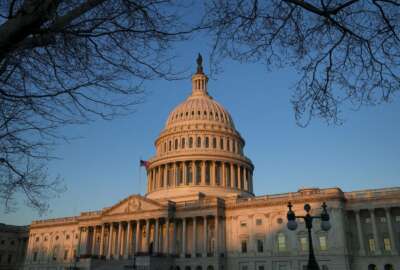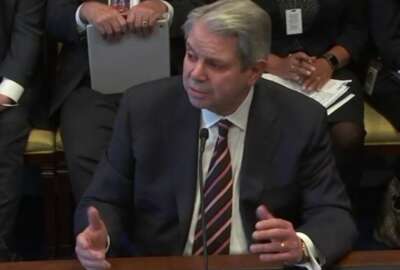
House Modernization Committee recommends bringing back Office of Technology Assessment
Congress stood up OTA in 1972 as a tech-focused watchdog to serve a complementary oversight role to the Government Accountability Office, but lawmakers in 1995 ...
Efforts to restore Congress’ defunct technology watchdog office have gotten a bipartisan boost from the House Select Committee on the Modernization of Congress.
Members unanimously approved a recommendation on Thursday to bring back the Office of Technology Assessment as part of its second package of proposed changes. This comes after the House passed a provision in the FY 2020 spending bill that would give OTA $6 million dollars in startup funding next year.
“I think there’s a general appreciation for the notion that as an institution, Congress needs to enhance its capacity to deal with technology,” Committee Chairman Derek Kilmer (D-Wash.) told reporters Thursday. “You’re seeing massive disruptive technological change … Frankly, I think Congress has been behind the eight ball in that regard.”
The latest recommendations focus on four areas: Improving the House’s IT infrastructure and oversight of tech issues, strengthening its human resources office, improving the onboarding process for new members and making House resources more accessible to members of the public with disabilities.
“The chairman has done a really fantastic job of creating an environment in which both parties are working together in a collaborative way to seek some solutions to some challenging questions and problems that have been raised,” Committee Ranking Member Tom Graves (R-Ga.) said.
Congress stood up OTA in 1972 as a tech-focused watchdog to serve a complementary oversight role to the Government Accountability Office, but lawmakers in 1995 zeroed out funding for the office.
While GAO has plans to increase its capacity to oversee emerging technology issues – such as artificial intelligence, quantum computing and blockchain – efforts to bring back OTA have also amplified in recent years.
Reps. Mark Takano (D-Calif.) and Sean Casten (D-Ill.) testified before the committee in April, and told members that a restored OTA would help fill gaps in technology oversight on the Hill.
“This sort of institutional knowledge has eroded over time,” Kilmer said.
If funded next year, the structure of a renewed OTA remains a work in progress. Kilmer suggested that its staff should include a rotation of industry experts, visiting professors and staff from the Energy Department’s national labs.
The committee’s next wave of recommendations will examine House rules and procedures, the annual budget and appropriations process, as well as the legislative calendar. Committee working groups have been working on these issues and will continue to develop them over the August recess.
Related Stories

GAO growing cyber staff even if Congress doesn’t revive tech assessment office

Freshman congressman: Axing Office of Tech Assessment made us ‘dumber as a nation’
Weeks later, lawmakers’ inability to reach a budget agreement kicked off the beginning of a 35-day shutdown.
The committee approved its first round of recommendations in May, which focused on improving transparency into the legislative process. Committee members introduced those recommendations as a bill on Thursday. At a minimum, the committee is required to compile a nonbinding report that includes its recommendations.
“We want to see these actually make it across the finish line. This committee is serious about seeing the results of these reforms. We really want to impact Congress and improve the way Congress serves the American people,” Kilmer said.
But Congress approving those recommendations into law might not be the only step. Kilmer said that in some instances, standalone legislation and additional funding in the legislative branch appropriations bill may be needed.
Copyright © 2024 Federal News Network. All rights reserved. This website is not intended for users located within the European Economic Area.
Jory Heckman is a reporter at Federal News Network covering U.S. Postal Service, IRS, big data and technology issues.
Follow @jheckmanWFED



